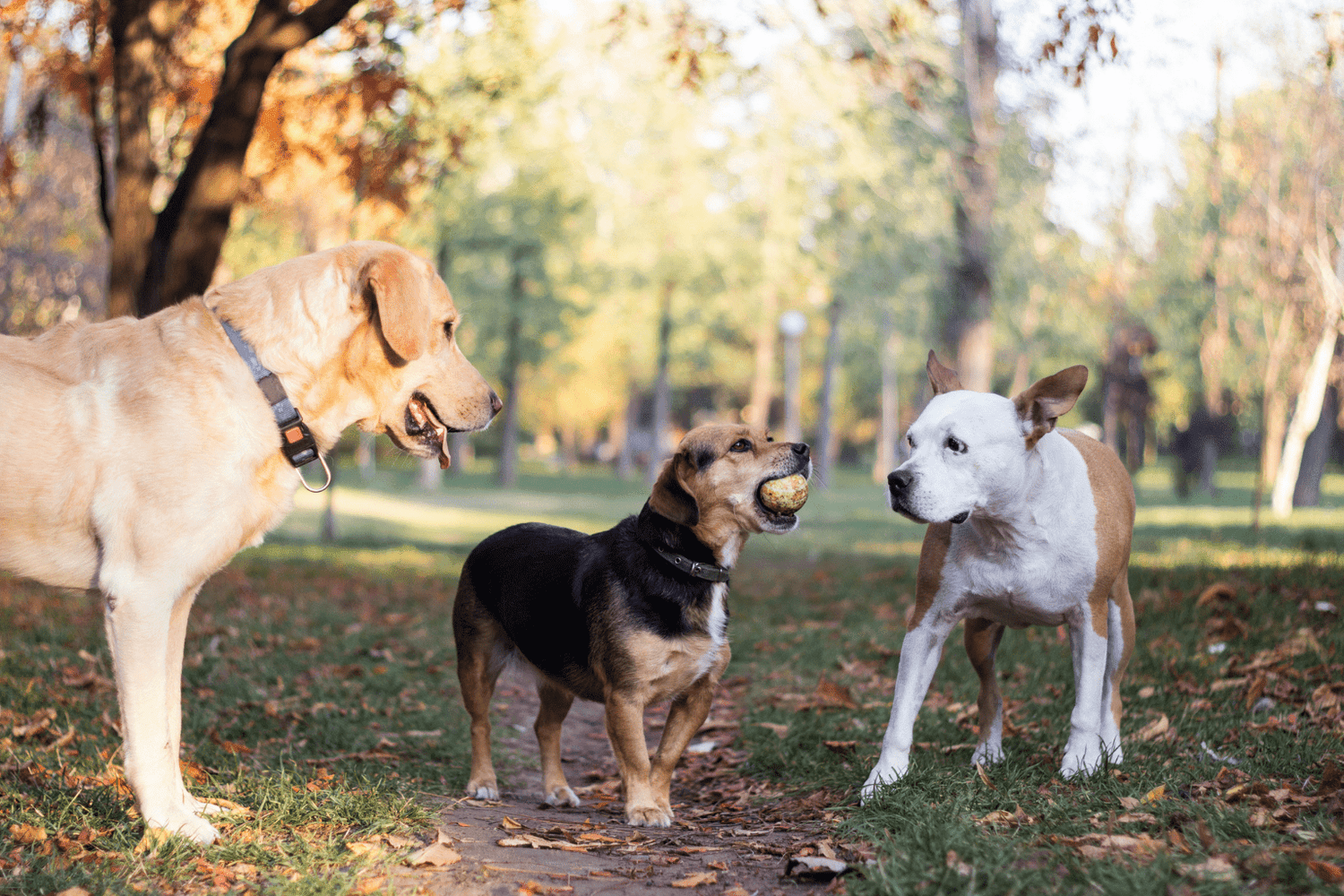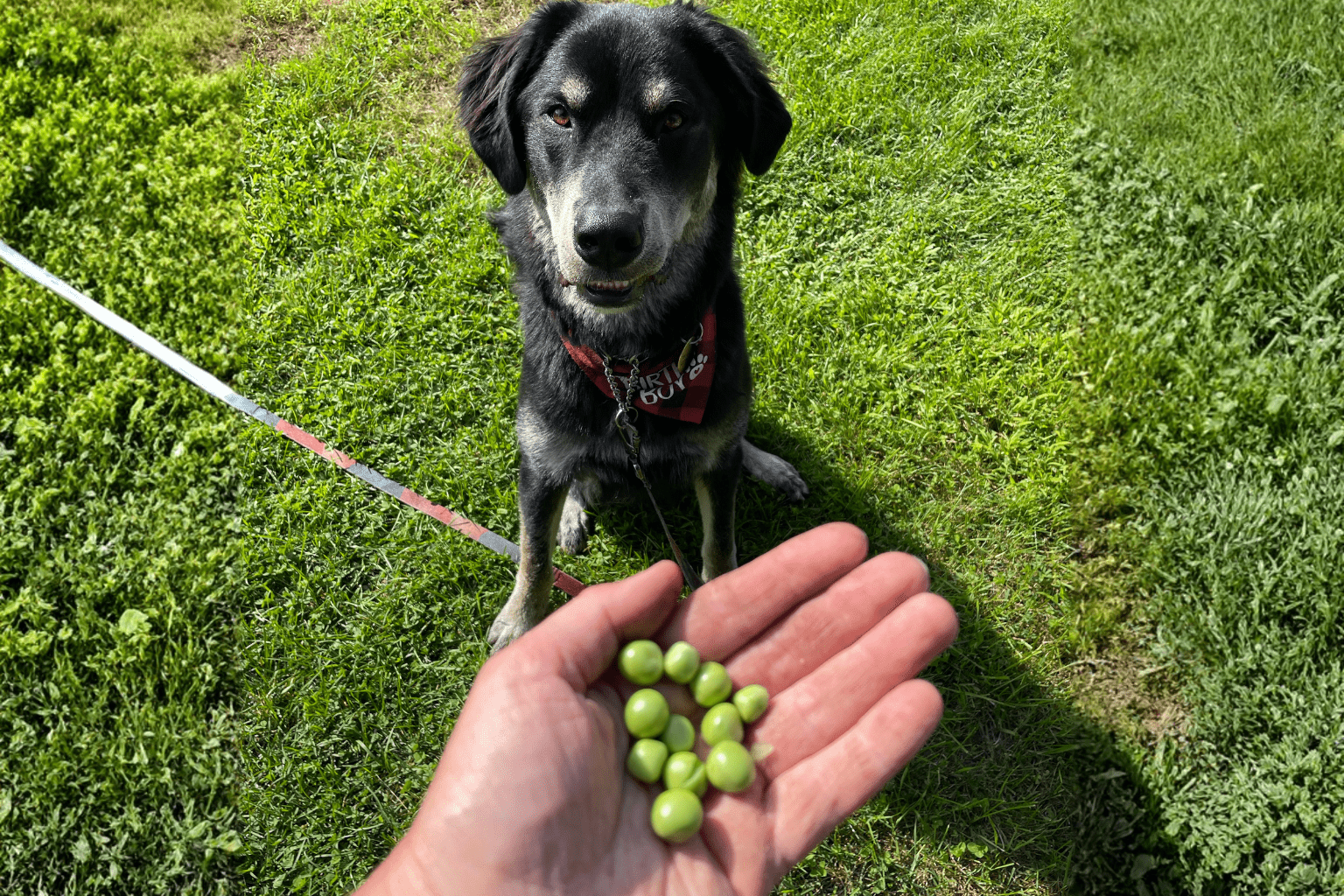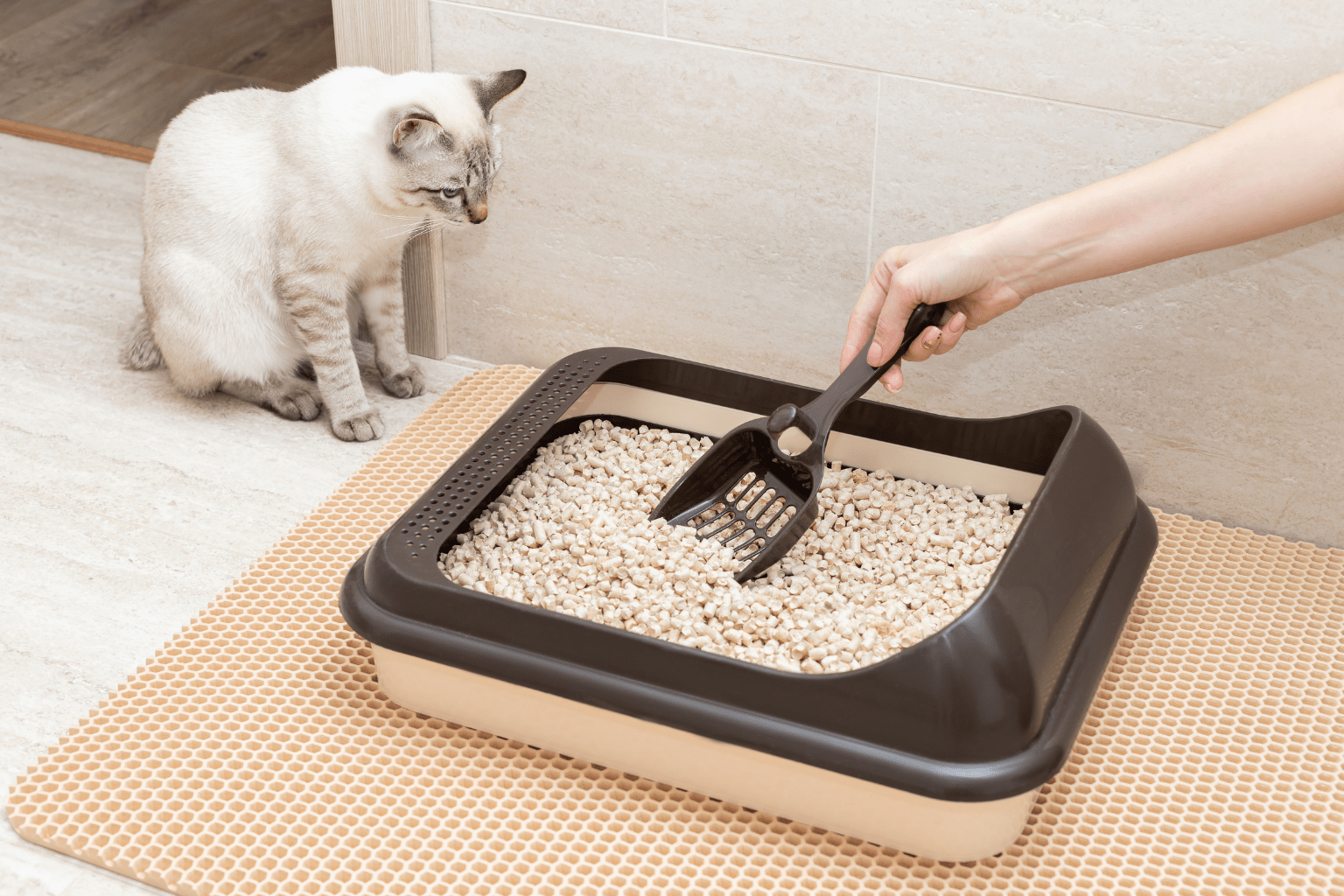Key Takeaways
- New dog breeds are emerging that were not present in previous generations.
- The American Kennel Club has recently recognized breeds like the Biewer Terrier.
- Designer dog crosses such as Goldendoodles are becoming increasingly popular.
- Today's dog options provide more variety for pet parents than ever before.
Table of Contents
- Meet the New Breeds Changing Dogs' Lives
- What Is a "New Dog Breed"?
- How Are New Dog Breeds Created and Recognized?
- Spotlight on Newly Recognized Dog Breeds
- Designer Breeds & Crossbreeds, What Pet Parents Should Know
- Size, Temperament, and Care Requirements
- Health Considerations and Natural Support
- Selecting the Perfect New Breed for Your Lifestyle
- Apartment-Friendly New Breeds
- High-Energy New Breeds for Active Families
- Health Considerations for New Breeds
- Finding Reputable Sources for New Breeds
- Training Unique Traits in New Breeds
- Supporting Long-Term Wellness Naturally
- The Future of New Dog Breeds
- Making the Right Choice for Your Family
Meet the New Breeds Changing Dogs' Lives
As pet parents, we're witnessing something extraordinary, the emergence of dog new breeds that didn't exist in our grandparents' time. From the recently AKC-recognized Biewer Terrier to popular designer crosses like Goldendoodles, today's canine landscape offers more choices than ever before.
A "new dog breed" can mean several things: officially recognized breeds that gained kennel club status in recent decades, thoughtfully developed crossbreeds creating consistent traits, or ancient breeds newly imported to North America. Each represents breeders' efforts to address modern needs, hypoallergenic coats for allergy sufferers, compact sizes for apartment living, or gentle temperaments for therapy work.
Understanding these newcomers matters because choosing the right companion affects everything from daily exercise routines to long-term wellness planning. Whether you're drawn to a rare Mudi's intelligence or a Pomsky's playful nature, knowing what makes these breeds unique helps ensure the best match for your family's lifestyle. For those looking to support their dog's overall health as they adjust to a new breed, natural dog supplements & remedies for common dog health problems can be a valuable addition to your care routine.
What Is a "New Dog Breed"?

The term "new breed" encompasses three distinct categories that often get confused. Purebreds are dogs whose parents belong to the same recognized breed with documented lineage. Crossbreeds or designer dogs result from intentionally mating two different purebred parents, like a Golden Retriever and Poodle creating a Goldendoodle. Mixed breeds have unknown or varied ancestry.
Official breed recognition involves rigorous documentation through organizations like the American Kennel Club (AKC) or Fédération Cynologique Internationale. Breeds must demonstrate consistent physical and temperamental traits across multiple generations, maintain detailed breeding records, and establish active breed clubs before gaining recognition status.
| Type | Breeding | Predictability | Recognition |
|---|---|---|---|
| Purebred | Same breed parents | High consistency | Official kennel club status |
| Crossbreed/Designer | Two different purebred parents | Moderate (varies by generation) | Usually none |
| Mixed breed | Unknown or varied ancestry | Unpredictable | None |
This distinction matters for health screening, behavioral expectations, and care requirements. Knowing your dog's category helps you prepare for everything from grooming needs to potential wellness concerns that may benefit from gentle, natural support.
How Are New Dog Breeds Created and Recognized?
New breeds develop to address specific needs: better health through genetic diversity, hypoallergenic coats for sensitive families, or temperaments suited to modern lifestyles. Breeders begin by crossing two established breeds (F1 generation), then breeding those offspring (F2), continuing until traits stabilize around F3-F4 generations.
The recognition process demands patience and precision. Breeders must maintain detailed health records, document consistent physical standards, and demonstrate the breed's unique purpose. Most kennel clubs require minimum population thresholds, typically 300-400 dogs across multiple geographic regions, plus active breed clubs promoting responsible ownership.
4 Steps to Official Recognition
- Foundation Stock Service: Initial documentation phase (AKC requirement)
- Miscellaneous Class: Limited competition eligibility (minimum 150 dogs)
- Parent Club Formation: Establish breed standards and health protocols
- Full Recognition: Complete AKC status with championship eligibility
This timeline typically spans 10-20 years from initial development to full recognition. The lengthy process ensures breeds possess stable temperaments and health profiles, though even established breeds benefit from holistic wellness support as they adapt to various environments and lifestyles.
Verification tip: Check the AKC's official breed list or contact breed-specific clubs to confirm recognition status before committing to a puppy.
Spotlight on Newly Recognized Dog Breeds
These newest dog breeds earned official AKC recognition within the past three decades, offering pet parents fresh options with documented traits and health protocols. Each brings unique characteristics developed for specific purposes, from apartment companionship to active outdoor adventures.
Recent additions reflect changing family needs, smaller homes requiring compact breeds, busy lifestyles needing lower-maintenance coats, or therapeutic applications demanding specific temperaments. Understanding these breeds' origins helps predict their care requirements and compatibility with your household.
Recently Recognized Breed Profiles
Biewer Terrier (2021): Toy-sized with silky tri-color coat, developed from Yorkshire Terrier lines. Ideal for apartments, weighs 4-8 pounds and bonds closely with families.
Russian Toy (2022): Ultra-compact companion weighing just 3-6 pounds, available in smooth or long coat varieties. Originally bred in Russia for apartment living, these dogs thrive in small spaces while maintaining surprising alertness.
Mudi (2022): Medium-sized Hungarian herding dog with exceptional intelligence and versatility. Weighs 18-29 pounds with a curly coat that comes in multiple colors. Perfect for active families seeking a trainable, energetic companion.
Barbet (2020): French water dog with a woolly, hypoallergenic coat. Medium to large size (35-65 pounds) with gentle temperament, making them excellent family dogs who love swimming and outdoor activities.
Designer Breeds & Crossbreeds, What Pet Parents Should Know

Designer breeds represent intentional crosses between two purebred parents, creating dog new breeds that combine desired traits from both lineages. Unlike randomly mixed breeds, these crosses follow specific breeding programs aimed at achieving particular characteristics.
Popular designer combinations include Goldendoodles (Golden Retriever + Poodle), Labradoodles (Labrador + Poodle), and Pomskies (Pomeranian + Husky). These crosses often target hypoallergenic coats, specific sizes, or balanced temperaments that suit modern lifestyles.
The key consideration lies in generation consistency. First-generation (F1) crosses show more variation, while F2 and F3 generations develop more predictable traits. Responsible breeders focus on health testing both parent breeds and maintaining detailed records of offspring characteristics. For more on how to support your dog's digestive health during these transitions, see our dog digestive health & parasite control bundle.
Designer Breed Reality Check: While designer dogs can inherit the best of both breeds, they can also inherit health issues from either parent line. Always research both contributing breeds' common health concerns. If you're interested in which breeds may be more susceptible to joint issues, check out this article on dog breeds at risk for arthritis.
Size, Temperament, and Care Requirements
The diversity among new breeds of dogs spans every conceivable size and personality combination. From the 3-pound Russian Toy to the 100-pound Dogo Argentino, recent additions to the dog world offer options for every living situation.
Temperament variations prove equally dramatic. The Mudi brings high energy and herding instincts perfect for active families, while the Coton de Tulear offers gentle companionship ideal for seniors or apartment dwellers. Many newly recognized breeds were developed for specific purposes, the Sloughi for hunting, the Barbet for water retrieval.
Care requirements reflect these diverse origins. Coat maintenance ranges from the minimal grooming needs of smooth Russian Toys to the regular brushing required for Barbets' woolly coats. Exercise needs vary similarly, some breeds thrive with daily walks, while others demand intensive physical and mental stimulation.
| Breed Category | Size Range | Exercise Needs | Grooming Level | Best For |
|---|---|---|---|---|
| Toy Breeds | 3-8 lbs | Low-Moderate | Varies | Apartments, Seniors |
| Herding Breeds | 18-65 lbs | High | Moderate-High | Active Families |
| Water Dogs | 35-65 lbs | Moderate-High | High | Outdoor Enthusiasts |
| Guardian Breeds | 80-100 lbs | Moderate | Low-Moderate | Experienced Owners |
Health Considerations and Natural Support
Newly recognized breeds often benefit from broader genetic diversity, but they're not immune to health challenges. Common concerns include joint issues in larger breeds, respiratory sensitivities in flat-faced varieties, and skin conditions in dogs with unique coat types.
The stabilization process for new dog breeds means some health patterns are still emerging. Responsible breeders conduct health testing, but pet parents should remain vigilant for breed-specific issues. Early signs include changes in appetite, energy levels, or coat quality.
Natural support systems can complement traditional veterinary care. Many pet parents find success with gentle, holistic approaches that support the body's natural healing processes. Our sugar-pellet remedies offer targeted support for common concerns like joint comfort, digestive health, and stress management, particularly valuable during the adjustment period with a new breed. If your dog is experiencing skin or coat issues, our dog healthy skin & coat remedy can help restore their shine and comfort.
Regular wellness monitoring becomes especially important with newer breeds. Establishing baseline behaviors, eating patterns, and energy levels helps identify subtle changes early. This proactive approach, combined with natural support options, helps ensure your new breed companion thrives throughout their life.
Selecting the Perfect New Breed for Your Lifestyle

Matching a new breed of dog to your lifestyle requires honest assessment of your living situation, activity level, and long-term commitment. The novelty of a recently recognized breed shouldn't overshadow practical considerations about daily care and compatibility.
For apartment living, consider smaller breeds like the Russian Toy or the Coton de Tulear, both of which adapt well to cozy spaces and offer affectionate companionship. If you prefer a slightly larger but still manageable companion, the Miniature American Shepherd brings herding smarts in a compact package, making them a great fit for urban families.
Apartment-Friendly New Breeds
The Russian Toy weighs just 3-6 pounds but packs enormous personality into their tiny frame. These alert companions adapt beautifully to smaller spaces while maintaining their spirited nature. The Coton de Tulear offers another excellent apartment option, their cotton-soft coat and gentle temperament make them ideal for close-quarters living.
For those seeking slightly larger options, the Miniature American Shepherd brings herding intelligence without the space demands of their full-sized cousins. At 20-40 pounds, they're manageable yet sturdy enough for active families in urban settings.
High-Energy New Breeds for Active Families
The Mudi stands out among dog new breeds for families who prioritize outdoor adventures. These Hungarian herders require substantial daily exercise, think hiking, agility training, or intensive fetch sessions. Their weather-resistant coat and athletic build make them perfect trail companions.
Sloughis offer a different energy profile entirely. These sighthounds need short bursts of intense activity followed by long periods of calm rest. They're ideal for runners who want a sprinting partner but appreciate a quiet home companion afterward.
Energy Reality Check: New breeds often combine traits from multiple parent breeds, creating unique exercise needs. A Pumi might need both mental stimulation and physical activity, while a Barbet requires swimming access to truly thrive. For more tips on keeping your energetic dog calm and happy, read our guide on how to calm down a stressed dog.
Health Considerations for New Breeds

Newly recognized breeds often benefit from diverse genetic backgrounds, but they're not immune to health challenges. Joint issues, digestive sensitivities, and stress-related behaviors can emerge as these breeds establish themselves in family homes.
Natural support makes a significant difference. Many pet parents find that gentle, holistic remedies help their new breeds adjust to family life while maintaining optimal wellness. Sugar-free pellet formulations work particularly well since they're easy to administer and don't interfere with specialized diets these breeds might require. If your dog is struggling with anxiety or stress, our dog anxiety & stress relief bundle can help ease their transition into your home.
The Dogo Argentino, for example, benefits from joint support due to their size and activity level, while smaller breeds like the Biewer Terrier often need digestive wellness support during diet transitions.
Finding Reputable Sources for New Breeds
Locating quality breeders for recently recognized dog new breeds requires extra diligence. Start with breed-specific clubs, they maintain breeder directories and health testing requirements. Ask potential breeders about health clearances, temperament testing, and their breeding goals.
Rescue organizations increasingly see newer breeds as designer crosses become more common. Breed-specific rescues for Pumis, Mudis, and other recent additions are growing, offering wonderful adoption opportunities.
Red flags include: breeders who always have puppies available, won't show you parent dogs, or can't provide health testing documentation. Quality breeders often have waiting lists, this is actually a positive sign.
Training Unique Traits in New Breeds
Many recently recognized breeds bring specific behavioral tendencies that require tailored training approaches. The Rat Terrier's prey drive needs early management, while the Coton de Tulear's sensitivity responds best to gentle, positive methods.
Herding breeds like the Miniature American Shepherd may attempt to "herd" family members, redirect this instinct into structured activities rather than trying to eliminate it entirely. Working breeds need jobs; puzzle toys and training sessions become essential daily activities.
Consistency matters more than intensity with these breeds. Short, frequent training sessions work better than marathon attempts, especially during the adjustment period when they're learning household routines.
Supporting Long-Term Wellness Naturally

Establishing wellness routines early helps new breed dogs thrive throughout their lives. Natural support systems, from joint care to stress management, become particularly valuable as these breeds age and their specific needs become clearer. If your dog is a large or giant breed, you may want to explore natural supplements for large & giant dog breeds and puppies to help support their long-term health.
Many pet parents discover that gentle, natural remedies work beautifully alongside traditional veterinary care. Pellet-based supplements integrate seamlessly into daily routines, supporting everything from seasonal comfort to travel anxiety without disrupting carefully planned diets.
The key lies in observing your individual dog's responses and adjusting support accordingly. What works for one Russian Toy might differ slightly for another, even within the same breed.
The Future of New Dog Breeds
Breed development continues evolving as modern families seek dogs that match contemporary lifestyles. Climate considerations, housing changes, and work-from-home trends all influence which traits breeders prioritize in developing new breeds of dogs.
Expect to see more emphasis on health testing, temperament stability, and adaptability in future breed recognition. The American Kennel Club's Foundation Stock Service currently tracks dozens of breeds working toward full recognition, each representing years of careful development and documentation. For a scientific perspective on canine breed development and genetics, see this external resource on the evolution and genetic diversity of dog breeds.
Technology also plays an increasing role, with genetic testing helping breeders make more informed decisions about breeding pairs and health outcomes. For more on how family dogs are changing and adapting, the AVMA provides a helpful overview in their Family Dog Report.
Making the Right Choice for Your Family
Choosing among dog new breeds ultimately comes down to honest assessment of your lifestyle, living situation, and long-term commitment. A Mudi's intelligence and energy can be wonderful assets or significant challenges, depending on your family's activity level and training experience.
Consider the next 12-15 years realistically. Will you still want daily hour-long hikes with your Sloughi?
Not a substitute for professional veterinary advice.
Frequently Asked Questions
What defines a "new dog breed" and how does it differ from designer or mixed breeds?
A new dog breed is typically an officially recognized breed that has recently gained kennel club status or is a thoughtfully developed breed with consistent traits. Designer breeds are intentional crosses between two purebreds to combine qualities, while mixed breeds have varied or unknown ancestry. New breeds often reflect modern needs like hypoallergenic coats or specific temperaments.
How does the American Kennel Club recognize and approve new dog breeds?
The American Kennel Club (AKC) recognizes new breeds through a formal process that includes verifying consistent breed traits, documented lineage, and a stable population. Breeds must meet specific standards and demonstrate a distinct identity before gaining official recognition and eligibility for AKC events.
What are the health and care considerations unique to newly recognized or designer dog breeds?
Newly recognized and designer breeds may have unique health profiles and care needs based on their genetics and traits. Pet parents should monitor their dogs closely, provide tailored exercise, and consider natural support options to maintain overall wellness. Understanding each breed’s temperament and size helps in planning appropriate care routines.
How can pet parents select the right new dog breed to match their lifestyle and living environment?
Choosing the right new dog breed involves considering factors like size, energy level, and temperament to fit your daily routine and home setting. For example, apartment-friendly breeds suit smaller spaces, while high-energy breeds thrive with active families. Researching breed traits and consulting with reputable breeders or rescues helps ensure a good match for your lifestyle.



